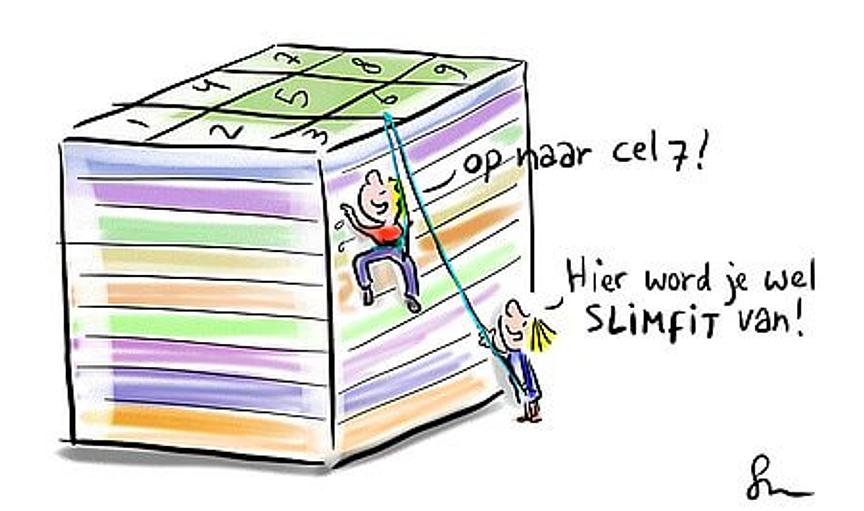Traditional classrooms follow a formula of one teacher, a set number of students, uniform learning materials, walls and closed doors. Primary education tends to have one teacher, responsible for one class for a full year, being broadly competent across the curriculum rather than specialising in a chosen subject. With every teacher in the school working in this way, there can be lack of collaboration, duplicated efforts and wasted talent. In contrast, encouraging teachers to share the workload by teaching collaboratively and specialising could boost job satisfaction, expertise and learning opportunities for children.
Slimfit is a model for school development focusing on collaborative teaching. Traditional classrooms are replaced with a new model that seeks to organize learners, utilize employees and use the school building in the most effective way possible to lead to a better and more exciting education at no extra cost.
Learning is reorganized so that instead of small, one teacher classrooms it takes place in smaller or larger groups and with differing staff ratios according to the requirements for that lesson. Within this system teachers can establish small instructional groups of 10 - 15 learners. This aims to provide more attention to each individual in the group, allowing a stronger relationship and more tailored learning.
Larger groups of 70-90 students can be taught collaboratively between teachers with different specialisms to best utilize teacher knowledge, using teaching assistants flexibly to provide more support. This flexible approach to learning can help to meet the requirements of every child in the classroom including those with special needs. A dedicated quiet room can also be used by children who benefit from silent study.
This approach makes use of expertise of in house specialists in the form of teachers and teaching assistants. Outside specialists also provide support, including trainees, volunteers and field specialists. Subjects like dance and drama are always taught by subject specialists to ensure the students receive enthusiastic and high quality learning opportunities. This can increase the quality of education, promote lifelong learning for staff and reduce individual work pressure.
The organization adopts a holistic approach to learning and wellbeing. Every learner is partnered with a mentor who becomes responsible for their learning progress throughout the school. Children begin and end the day in their mentor groups to discuss and evaluate learning opportunities that day. Every 6 weeks coaching sessions are held to fine tune the goals of the individual, monitor their learning and ensure their wellbeing.
Whilst Slimfit began in 2010 it has recently gained a lot of attention due to a debate opening up called 'Operation Education' in the Netherlands. This debate is centred on discussing newways toapproacheducation and this model is being discussedthrough media and politics as a new model for primaryeducation.



